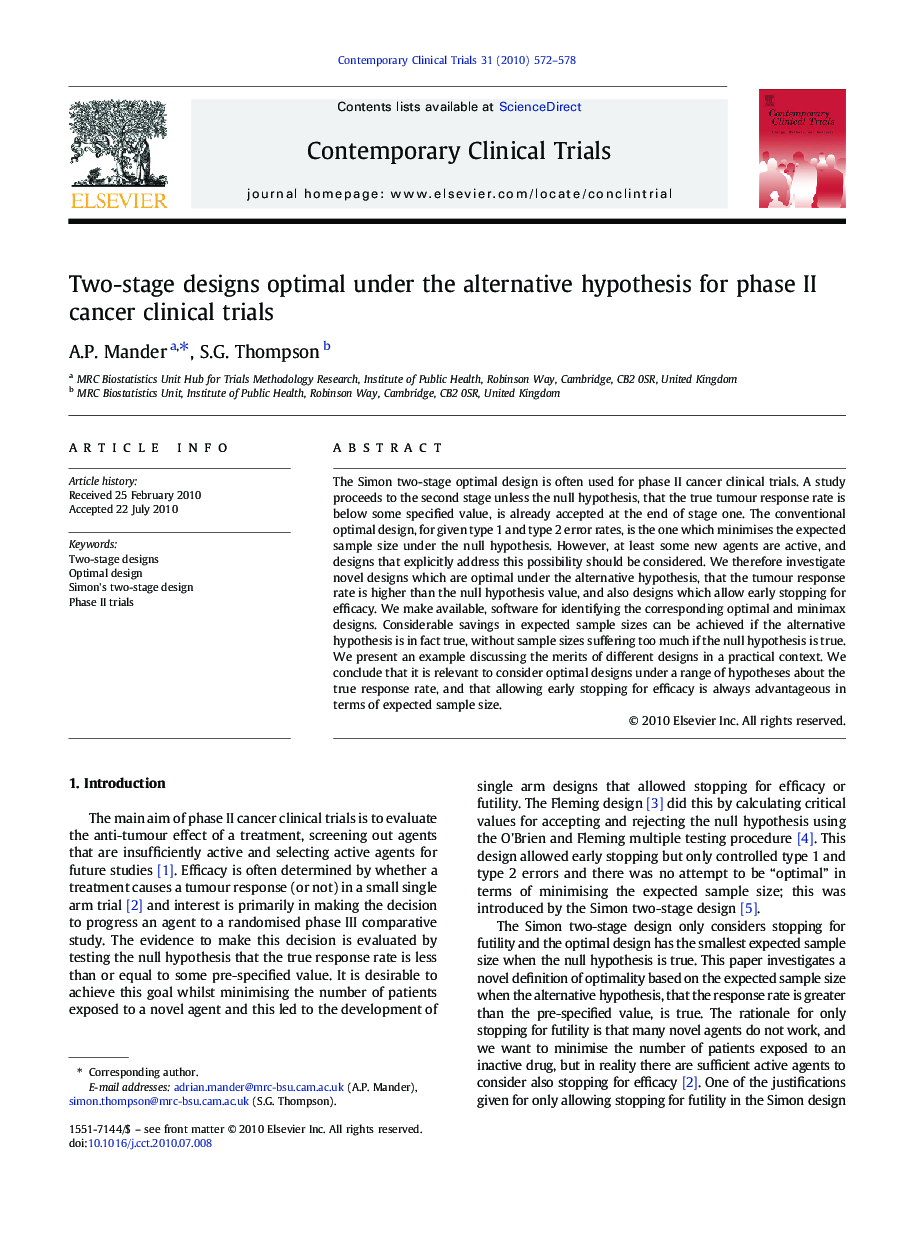| Article ID | Journal | Published Year | Pages | File Type |
|---|---|---|---|---|
| 6151429 | Contemporary Clinical Trials | 2010 | 7 Pages |
Abstract
The Simon two-stage optimal design is often used for phase II cancer clinical trials. A study proceeds to the second stage unless the null hypothesis, that the true tumour response rate is below some specified value, is already accepted at the end of stage one. The conventional optimal design, for given type 1 and type 2 error rates, is the one which minimises the expected sample size under the null hypothesis. However, at least some new agents are active, and designs that explicitly address this possibility should be considered. We therefore investigate novel designs which are optimal under the alternative hypothesis, that the tumour response rate is higher than the null hypothesis value, and also designs which allow early stopping for efficacy. We make available, software for identifying the corresponding optimal and minimax designs. Considerable savings in expected sample sizes can be achieved if the alternative hypothesis is in fact true, without sample sizes suffering too much if the null hypothesis is true. We present an example discussing the merits of different designs in a practical context. We conclude that it is relevant to consider optimal designs under a range of hypotheses about the true response rate, and that allowing early stopping for efficacy is always advantageous in terms of expected sample size.
Related Topics
Health Sciences
Medicine and Dentistry
Medicine and Dentistry (General)
Authors
A.P. Mander, S.G. Thompson,
